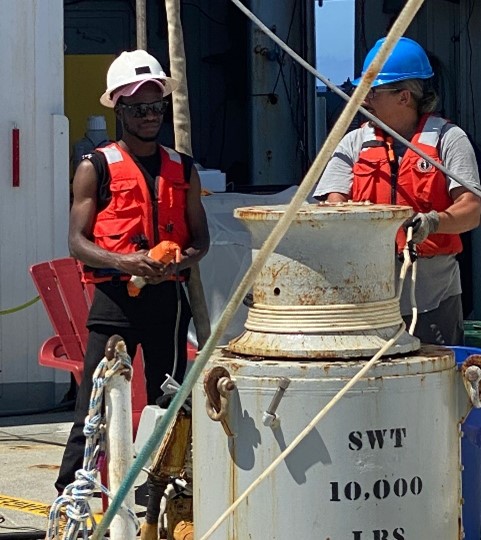What is it like to be on the ocean? Is it really like living on a roller coaster for months? Is it much fun?
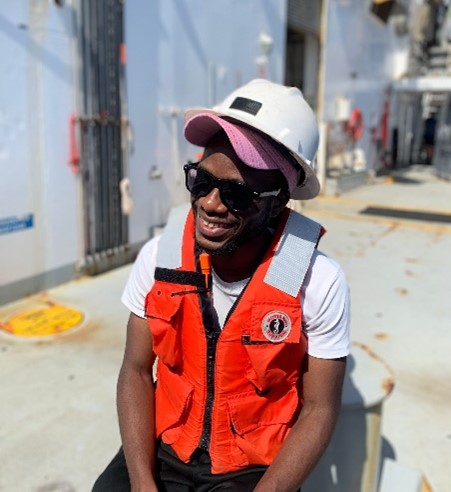 I am Opeyemi Kehinde, a second-year master’s student of oceanography at the Florida State University in Dr. Stukel’s lab. I study the lateral advection of organic matter in the eastern Indian ocean using remote sensing. On this BLOOFINZ-IO expedition, apart from other things like thorium sampling, assisting with drift arrays, Sediment traps, CTDs and so on, I was majorly involved in sampling POC, which stands for particulate organic matter. These in-situ measurements will enable me to validate the remotely sensed data I am using for my study. Different science groups from around the world were present to make this project a success. It was so exciting to work alongside esteemed researchers and learn about their work.
I am Opeyemi Kehinde, a second-year master’s student of oceanography at the Florida State University in Dr. Stukel’s lab. I study the lateral advection of organic matter in the eastern Indian ocean using remote sensing. On this BLOOFINZ-IO expedition, apart from other things like thorium sampling, assisting with drift arrays, Sediment traps, CTDs and so on, I was majorly involved in sampling POC, which stands for particulate organic matter. These in-situ measurements will enable me to validate the remotely sensed data I am using for my study. Different science groups from around the world were present to make this project a success. It was so exciting to work alongside esteemed researchers and learn about their work.
This is my longest cruise and the first time I have crossed the equator by sea. After the 4hr drive from Florida to Georgia, we flew over 24 hours to Guam (a very beautiful small island) and then quarantined at the hotel for several days before boarding finally boarding our research vessel “the Roger Revelle” on the 14th of January. Then, we sailed from Guam to Darwin, Australia and then to the Indian ocean which took a total of 12 days.
 Now, let’s talk about the ship and the ocean. The ship is like its own small world where we were surrounded by water with no sign of any land around. Most things needed for daily life are present. The Roger Revelle Ship hails from Scripps Institution of Oceanography. In this ship, there are many laboratories (main lab, hydro lab, analytical lab, computer lab and the wet lab), a kitchen, many bathrooms, a lounge (for movies), a gym, a laundry room, games, a library etc. Well, it could truly be like living on a roller coaster sometimes, but this depends on many factors like the ship’s size and the weather. Sometimes, it could feel like one is floating while on a bed or walking. For this cruise it was calm weather almost throughout. Contrary to the general thought that it’s all about fun on cruises, this was a research cruise and not a pleasure cruise.
Now, let’s talk about the ship and the ocean. The ship is like its own small world where we were surrounded by water with no sign of any land around. Most things needed for daily life are present. The Roger Revelle Ship hails from Scripps Institution of Oceanography. In this ship, there are many laboratories (main lab, hydro lab, analytical lab, computer lab and the wet lab), a kitchen, many bathrooms, a lounge (for movies), a gym, a laundry room, games, a library etc. Well, it could truly be like living on a roller coaster sometimes, but this depends on many factors like the ship’s size and the weather. Sometimes, it could feel like one is floating while on a bed or walking. For this cruise it was calm weather almost throughout. Contrary to the general thought that it’s all about fun on cruises, this was a research cruise and not a pleasure cruise.
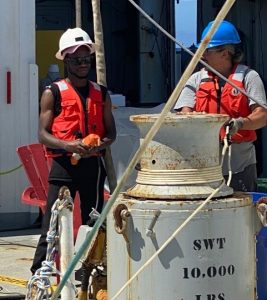 Hence, we were busy working hard getting samples and conducting research both night and day. It was a lot of fun for me because despite the work, this cruise was full of scientists that have learned to incorporate fun into what we do as oceanographers. We had daily riddles, scavenger hunts for a pig, and even a communal word game I started myself.
Hence, we were busy working hard getting samples and conducting research both night and day. It was a lot of fun for me because despite the work, this cruise was full of scientists that have learned to incorporate fun into what we do as oceanographers. We had daily riddles, scavenger hunts for a pig, and even a communal word game I started myself.
Special thanks to my advisor, Dr. Stukel and my lab group members (Christian & Natalie) with whom I worked every day.
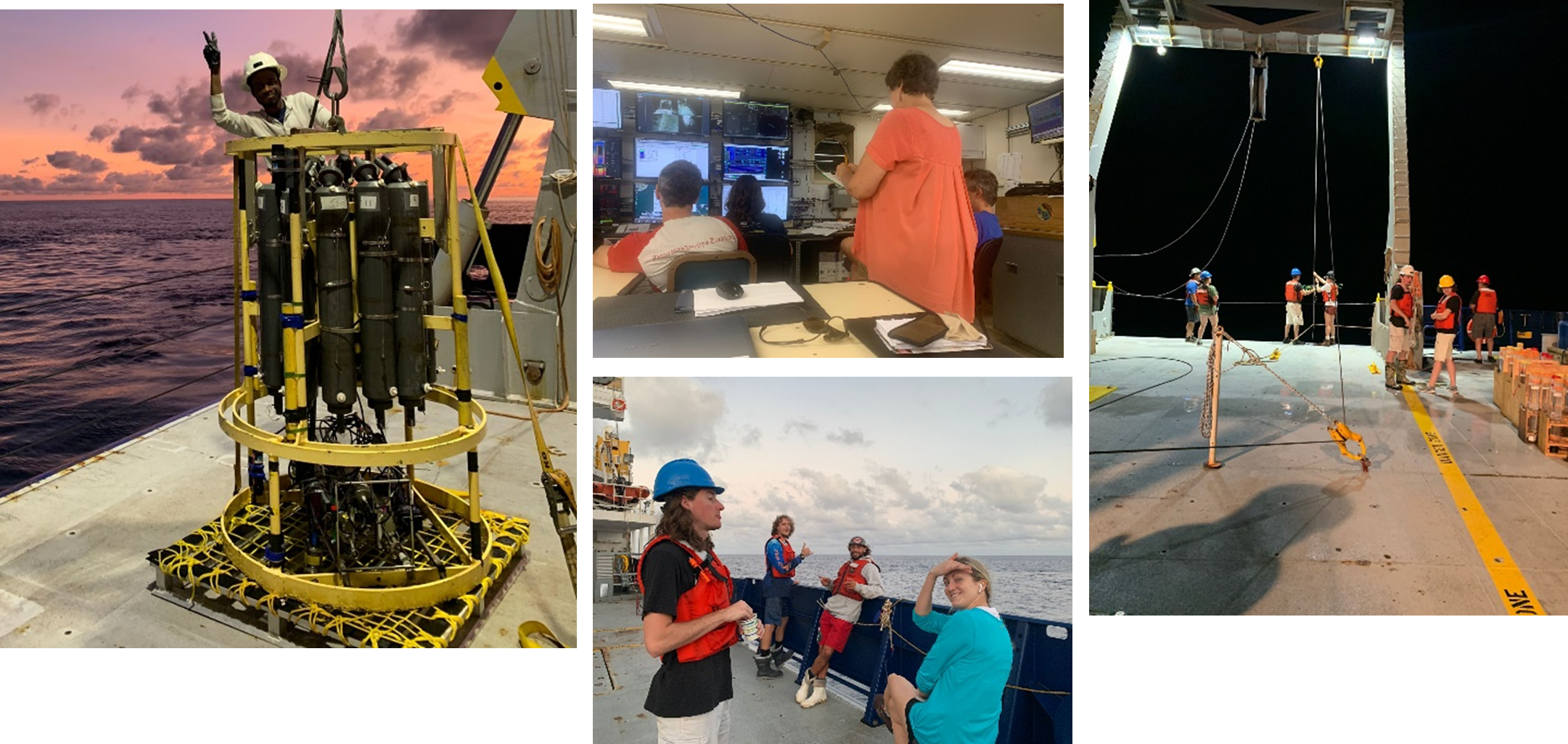
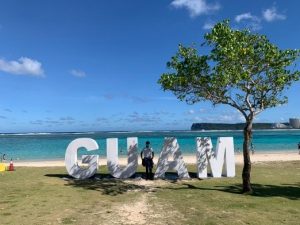
A: The CTD after sampling during the sunrise. B: the computer lab during a CTD deployment. C: a midnight Sediment trap deployment. D: Christian, Luke, Alejandro and Natalie preparing for work. E: Me at Tumon bay in Guam.

